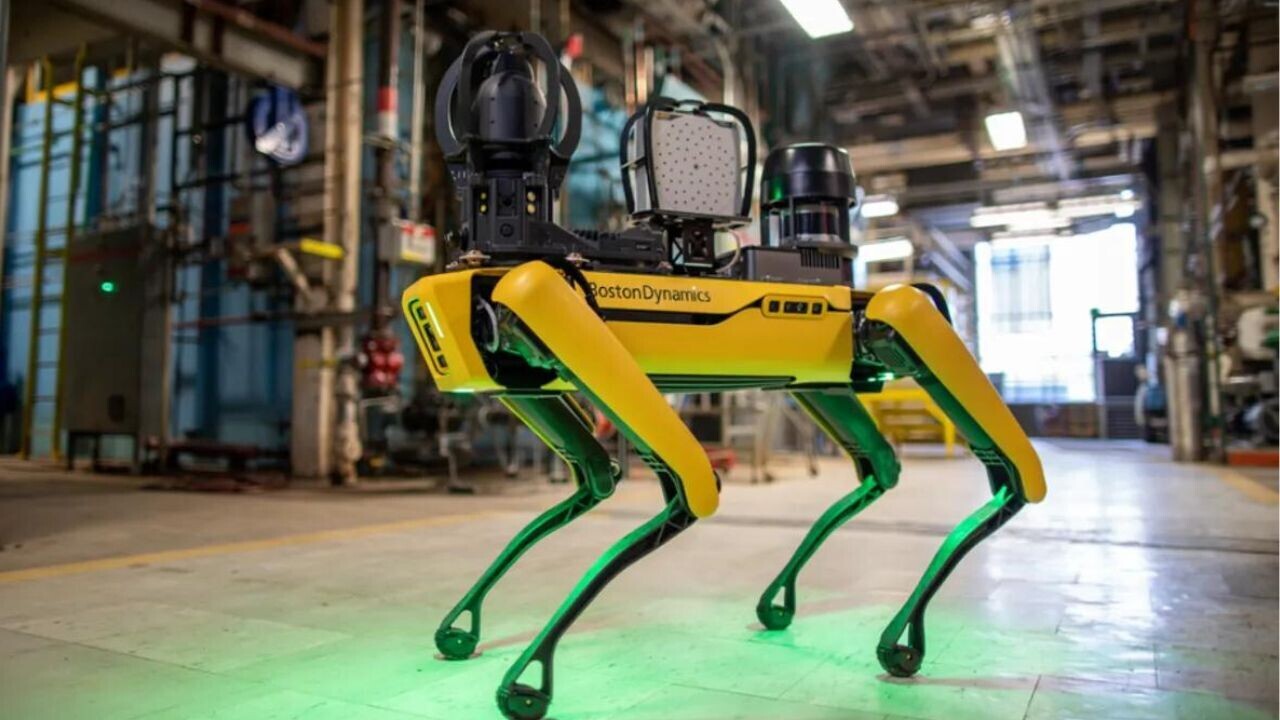 ‘Four-legged “Spot” robots, developed by US-based Boston Dynamics, have negotiated pitch-black conditions to map an evaporator cell in the fuel cycle area of the Dounreay site in Scotland. Dounreay was the UK’s former fast reactor test facility, which operated from 1955 to 1994. It is now being decommissioned. Ongoing clean-up and dismantling work is continuing.
‘Four-legged “Spot” robots, developed by US-based Boston Dynamics, have negotiated pitch-black conditions to map an evaporator cell in the fuel cycle area of the Dounreay site in Scotland. Dounreay was the UK’s former fast reactor test facility, which operated from 1955 to 1994. It is now being decommissioned. Ongoing clean-up and dismantling work is continuing.
Spot’s task was to map out the four-storey cell, collecting important radiological data for the team to use when planning the decommissioning of the facility; and to gain useful experience on how the robot and survey equipment should be used.
A team of 12 has been supporting the robot trials. This includes Dounreay staff led by Project Manager Bernie Jones, as well as staff from Createc, the systems integrator for Spot, who are working with Dounreay on a series of seven use cases for the robot to be carried out over the next few months.
The site joiners constructed a wooden mock-up of the evaporator cell entrance and temporary containment in a clean area to test the abilities of the robot and train its operators before the work moved into the evaporator cell.
A Spot robot, covered in a protective suit, once inside the evaporator cell collected data to give the team a complete 3-dimensional map of the area. It also collected radiological data to create a full dosimetry map showing areas of higher radioactivity, which will enable the team to develop a radiological fingerprint.
“By doing the initial groundwork, Spot has shown us the hazards that might affect workers who are tasked with the decommissioning, said Bernie Jones. “We will use the data to ensure that we mitigate those hazards and keep our people safe. This work also has the potential to save money on our decommissioning investigation.”
Createc’s Energy MD, Will Newsom, said: “Over the course of five days, we deployed two Spots in multiple entries to the cell. The environment we were exploring was complex as it had not been accessed in over 20 years, so the team didn’t know what to expect: that’s what made the deployment so challenging.” He added: “Using our innovative NV-Explore sensor, the team captured 3D radiation maps. At the same time, one Spot with a robotic arm was used to take several physical samples for lab analysis.”
NDA Technology and Innovation Director Professor Melanie Brownridge noted that the work had shown the potential applicability of the technology across the NDA group. “Shared learning and collaboration across our group is essential to the successful delivery of our mission. We have many common challenges and the potential to learn and share the impact, benefitting from innovative approaches such as this is truly significant.”
Over the coming year, Dounreay will systematically validate the suitability of several different types of sensors, combined with Spot, to support the digitalisation of existing on-site processes. The use cases will demonstrate the multi-tasking value of the quadruped for nuclear sites, and its ability to carry out practical work for multiple teams.
The Spot robots were delivered to the Dounreay site in June. Spot had previously been deployed at sites across the NDA estate, with the NDA co-funding the work at Dounreay to help deliver benefit from the innovation groupwide. The work at Dounreay compliments and builds on the recent deployment of Spot at Sellafield.
Image: "Spot" the robot dog



